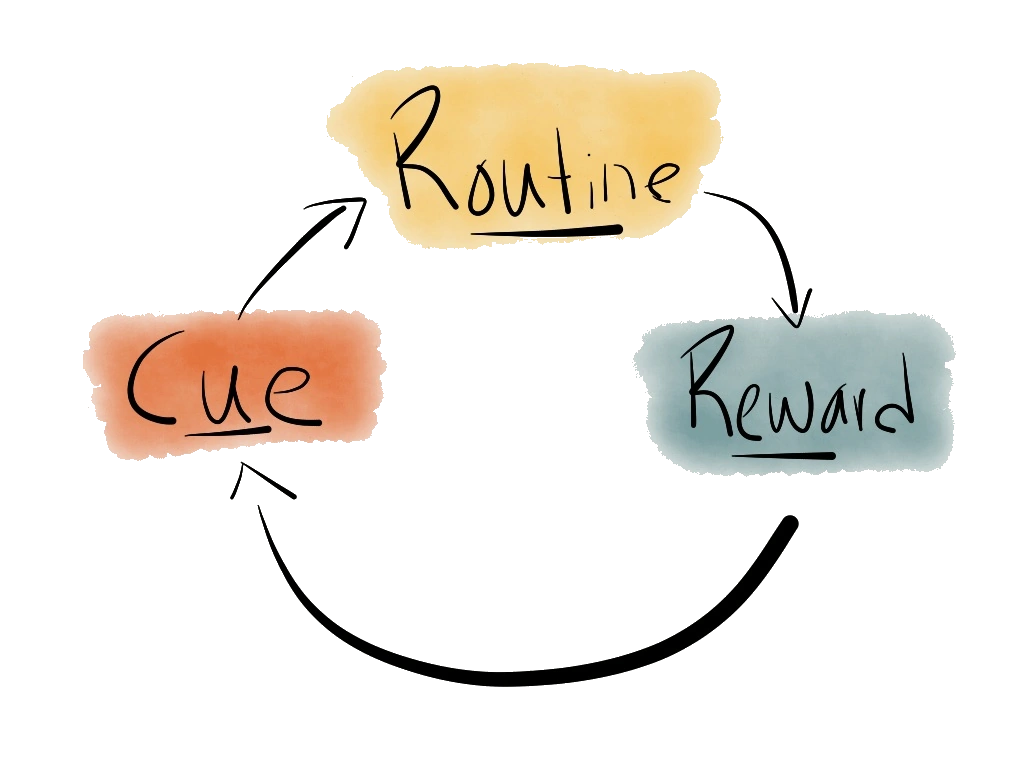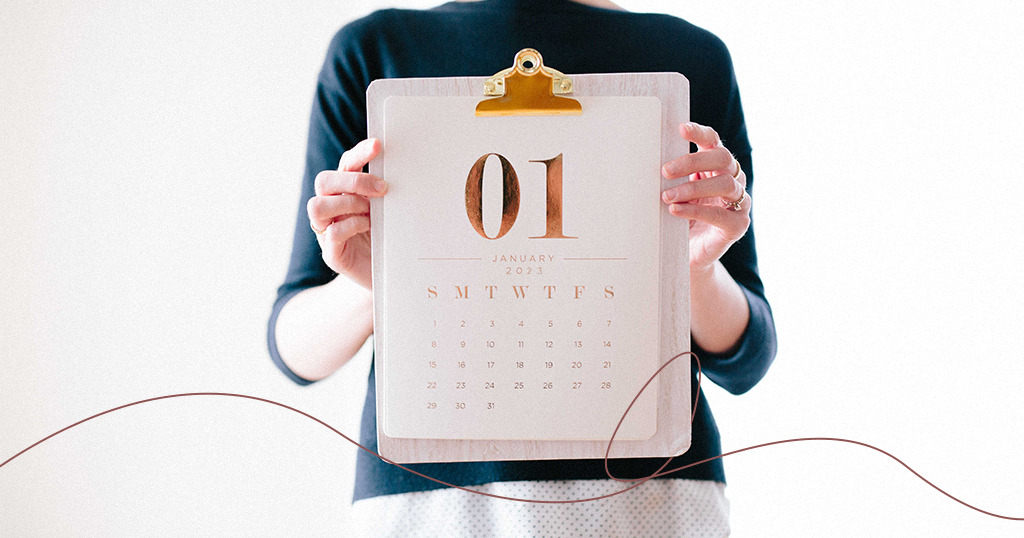Habits are the building blocks to achieving goals. In this blog we discuss the relationship between goals, behaviors and habits, and why focusing on changing habits is the key to achieving your goals.
Habits are a powerful force in our lives. They shape our behavior, influence our decision-making, and ultimately determine the results we see in our lives. That’s why changing our habits is such a crucial step in achieving our goals.
Where as goals are high level objectives, habits are the small actions that we repeat all the time, that that either move us closer or further away from our goals.
From goals to habits
Goals are the things that you want to achieve at some future point in your life; they are usually a desired a state or milestone. Having goals is important because they give you something to work towards and help you stay motivated. They can also help you stay focused and organized, provide a sense of direction and purpose and identify the opportunities and people that align with this purpose.
Habits concern the actions that get us to our goals. Moving from setting goals to changing habits requires taking a magnifying glass and zooming in on the day-to-day activities that relate to the goal you want to achieve. To do this you can follow a goals → behaviors → habits framework. Start with your goal, next identify the behaviors that will get you to your goals, and next identify the habits that you need to replace to take the ongoing actions that will produce the desired results.
Let’s say your goal is to get promoted at work. One of the behaviors you might need to change is your time management skills. Maybe you’re someone who tends to procrastinate and leave tasks until the last minute, or maybe you struggle to stay focused on a single project for very long. This behavior is the result of a series of habits that you can unpack and rebuild to make real and lasting change that will move you closer to your goal.
We recommend the Tiny Habits Framework for a detailed approach to working out the key behaviors that will help you to achieve your goals and aspirations.
How to unpack behaviors into habits
To unpack behaviors into habits, you can use the “habit loop” as a framework. The habit loop consists of three parts: the cue, the routine, and the reward.

The cue is the trigger that initiates the habit. It can be a specific time of day, a location, an emotional state, or any other type of trigger.
The routine is the actual behavior or action that you take in response to the cue. This is the habit itself.
The reward is the positive outcome or benefit that you receive from the habit. This is what motivates you to repeat the habit in the future.
To unpack a behavior into a habit, you can start by identifying the cue that initiates the behavior.
Here is an example of how the habit loop might work in a work-related context:
Cue: The end of a meeting
Routine: Checking email
Reward: Feeling productive and caught up on work
In this example, the cue is the end of a meeting. This triggers the routine of checking email, which is the habit. The reward for this habit is feeling productive and caught up on work. This reward reinforces the habit and makes it more likely to be repeated in the future.
To change this habit, you might try to identify a new routine that still provides the same reward. For example, you might try taking a short walk or making a to-do list after a meeting instead of checking email.
Here is an example of how the habit loop might work in a connection-building context:
Cue: Seeing a notification on your phone
Routine: Checking social media
Reward: Feeling connected and entertained
In this example, the cue is seeing a notification on your phone. This triggers the routine of checking social media, which is the habit. The reward for this habit is feeling connected and entertained. This reward reinforces the habit and makes it more likely to be repeated in the future.
To change this habit, you might try to identify a new routine that still provides the same reward. For example, you might try calling a friend or reading a book instead of checking social media when you see a notification on your phone.
Here is an example of how the habit loop might work in a leadership context:
Cue: Seeing an employee struggling with a task
Routine: Micro-managing and taking over the task
Reward: Feeling like you are in control and getting the task done efficiently
In this example, the cue is seeing an employee struggling with a task. This triggers the routine of micro-managing and taking over the task, which is the habit. The reward for this habit is feeling like you are in control and getting the task done efficiently. This reward reinforces the habit and makes it more likely to be repeated in the future.
To change this habit, you might try to identify a new routine that still provides the same reward. For example, you might try coaching and supporting the employee through the task, rather than taking it over. By replacing the old habit with a new one, you can start to see real change in your leadership style and foster a more collaborative and empowering team environment.
Here is an example of how the habit loop might work in a confidence-building context:
Cue: Feeling anxious or self-conscious in conversations with people more experience than you in a particular situation
Routine: Avoiding interactions with people more experienced than you
Reward: Feeling safe and avoiding feeling not good enough
In this example, the cue is feeling anxious or self-conscious in situations where people have more experience than you. This triggers the routine of avoiding this type of interaction, which is the habit. The reward for this habit is feeling safe and avoiding feeling like you don’t know enough. This reward reinforces the habit and makes it more likely to be repeated in the future.
To change this habit, you might try to identify a new routine that still provides the same reward. For example, you might try seeking out interactions that are more comfortable or low-stakes, such as organized mentorship, a club or group where you can meet people who are more experienced than you in a particular area.
If you want to learn more about how to create new habits, we recommend reading James Clear’s blog ‘How To Start New Habits That Actually Stick’. The Power of Habit by Charles Duhigg and Nir Eyal is also an excellent book on this topic.
It’s important to remember that changing habits take willpower and conscious effort, so it’s best to focus primarily on changing one habit at a time to improve your ability to succeed. Once you start to consciously change your habits, the experience will compound and it will likely become easier for you to make change.
Conclusion
By unpacking behaviors into habits and identifying the habit loop, you can gain a better understanding of your behaviors and start to change them in a more intentional and deliberate way.
Follow OneUpOneDown on Facebook, LinkedIn, Twitter and Instagram to stay tuned with the latest news.
